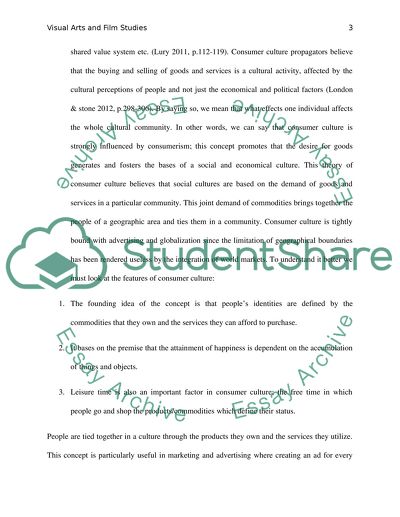Cite this document
(“Photography and Consumer Culture Essay Example | Topics and Well Written Essays - 2500 words”, n.d.)
Photography and Consumer Culture Essay Example | Topics and Well Written Essays - 2500 words. Retrieved from https://studentshare.org/visual-arts-film-studies/1449058-what-is-the-role-of-photography-in-consumer
Photography and Consumer Culture Essay Example | Topics and Well Written Essays - 2500 words. Retrieved from https://studentshare.org/visual-arts-film-studies/1449058-what-is-the-role-of-photography-in-consumer
(Photography and Consumer Culture Essay Example | Topics and Well Written Essays - 2500 Words)
Photography and Consumer Culture Essay Example | Topics and Well Written Essays - 2500 Words. https://studentshare.org/visual-arts-film-studies/1449058-what-is-the-role-of-photography-in-consumer.
Photography and Consumer Culture Essay Example | Topics and Well Written Essays - 2500 Words. https://studentshare.org/visual-arts-film-studies/1449058-what-is-the-role-of-photography-in-consumer.
“Photography and Consumer Culture Essay Example | Topics and Well Written Essays - 2500 Words”, n.d. https://studentshare.org/visual-arts-film-studies/1449058-what-is-the-role-of-photography-in-consumer.


